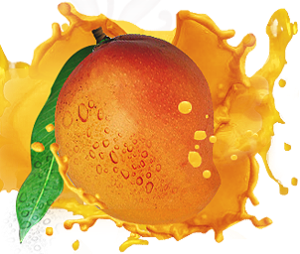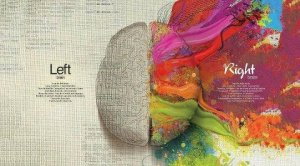It's a love affair that's been going on for centuries. And no wonder. There's nothing like a new lipstick or favourite perfume to make us look and feel good. Or so we thought... In fact, according to a new report, most of our favourite cosmetics are cocktails of industrially produced and potentially dangerous chemicals that could damage our health and, in some cases, rather than delivering on their potent 'anti-ageing' promise, are causing us to age faster.
Research by Bionsen, a natural deodorant company, found that the average woman's daily grooming and make-up routine means she 'hosts' a staggering 515 different synthetic chemicals on her body every single day.
any of those are also used in products such as household cleaners, and have been linked to a number of health problems from allergies and skin sensitivity to more serious hormonal disturbances, fertility problems and even cancer. Parabens, for example, which are designed to preserve the shelf-life of your cosmetics, are one of the most widely used preservatives in the world, and are found in shampoos, hair gels, shaving gels and body lotions.
But their use is becoming increasingly controversial - a range of different studies has linked them to serious health problems including breast cancer, as well as fertility issues in men. Research from the Kyoto Prefectural University of Medicine suggests that some parabens we had previously presumed to be safe, such as Methylparaben, may mutate and become toxic when exposed to sunlight, causing premature skin ageing and an increased risk of skin cancer. Methylparabens are found in more than 16,000 products, including moisturisers and toothpastes. Cosmetic producers have always defended their use of parabens on the grounds that they can't be absorbed into the body. But many leading researchers disagree, including Dr Barbara Olioso, an independent professional chemist, who says: 'Research shows that between 20 and 60 per cent of parabens may be absorbed into the body.'

There are a number of laws designed to protect us from dangerous chemicals in cosmetics, but researchers worry that they don't go far enough.
The Cosmetic Toiletries and Perfumery Association said : 'Stringent laws require all cosmetics to be safe, and each product undergoes a rigorous safety assessment. The number of ingredients in a product, or whether it is natural or man-made, has no bearing on how safe it is.'
They also say that any chemicals are present in safe doses that can't harm us. While that may be true, there is some disagreement over what constitutes a 'safe' level - for young people and children, or sensitive adults, these levels may not be so safe at all. And even if the relatively small amounts in individual products don't hurt us, there is growing concern over the number of products women use daily, and the cumulative effect of so many chemicals being used all over our bodies every day, for many years. As Charlotte Smith, spokesperson for Bionsen, says: 'Women have never been more image-conscious and their beauty regimes have changed over the years, from a simple "wash & go" attitude, to daily fake-tan applications, regular manicures, false lashes and hair extensions. 'Lots of the high-tech, new generation cosmetics and beauty "wonder" treatments naturally contain more chemicals to achieve even better results, which, of course, means women apply more chemicals than ever before.' If you want to protect yourself from chemical overload, reduce your overall cosmetics usage; switch to natural or organic products, and read the labels on your beauty and grooming products with care.
For better life we should go for Ayurveda Beauty Treatments, its herbal treatments - very natural and totally safe.
Ayurveda Treatments for skin Diseases--->>> 
The holistic management of health problems in ayurved comprises the three fold scientific approach towards diseases through diet, lifestyle and medicine.
Ayurveda has stated that skin diseases occur primarily due to sluggish liver function, which leads Pitta and Kapha Dosha dysfunction when toxins build up and the liver is overwhelmed, then the impurities show up in break-outs and other skin problems.
Another vital factor that contributes to healthy appearance is the clean bowel: hence the need for regular and complete bowel evacuation. In order to achieve this, a mild laxative like Trifala and a light diet are advisable if one suffers from constipation.
Effects of Stress on Skin
There are three types of stress, and all three impact the skin in different ways.
Mental stress starts a chain reaction that ends in a drying out the moisture in the skin. Thinning, dryness and the shrinking of the 'shrotasa' (microchannels) that carry nutritive fluid to the skin result in wrinkles and stress lines.
Emotional stress also affects the skin-just notice how anger or embarrassment can turn your face red. This shows the connection between emotions and the skin. If emotional stress becomes chronic, the result is acne, sun sensitivity, and other Pitta-based problems.
Physical stress: Exercising too much, working too much, or straining the body over a period of time causes physical stress. This causes the drying out of skin moisture and rough, aged skin.
To counteract mental stress, maintain a Vata-pacifying diet and daily routine. To bring emotional stress into balance, follow a Pitta-pacifying diet and routine. For physical stress, try to limit exercise or work to fifty percent of your physical stamina.
Scientifically treatments have been classified as shodhana & shamana.
Shodhan Treatment-
When doshas are vitated in large guantity & disease is chronic then shodhan chikitsa should apply first.
Acharyas have classified shodhana as Basti, Vaman, Virechana, Raktamokshana (Blood letting) & nasya.
Shaman Treatment-
When doshas are minimally imbalanced & the body is weak. Shaman Treatment is more important.
Shaman treatment can be classified as external & internal.
Administration of proper food, medicines by mouth is internal treatment & the application of medicated oil, lepo (ointment), etc is external treatment.
Some homemade remedies for your skin -->>
For Acne & Pimples ---
- A paste made from one teaspoon each of sandalwood powder and turmeric mixed with milk, is very good. A paste of nutmeg and water is also beneficial.
- Half a cup of aloe vera pulp can be taken internally (Do not take internally if pregnant) or applied externally to the skin. Dosage: Twice a day.
- Before going to bed, was the face thoroughly and then apply a paste of 1 Tsp. coriander juice mixed with a pinch of turmeric powder.
- For pimples, apply a paste made from one teaspoon of cumin seeds. Remove after one hour.
- A paste of fresh fenugreek leaves, applied and washed off with warm water before going to bed prevents pimples.
For Pigmentation ---
- Grind five almonds and mix with 1 teaspoon of fresh cream and a few drops of lemon juice. Apply this paste to the face and neck. Leave on for about fifteen minutes.
- apply papaya juice, or mashed papaya, to the affected areas.
- Grind equal amounts of sesame seeds and turmeric in a small quantity of
- Water Apply to the face or discolored skin.
- Make a paste from basil (tulsi) leaves and water to use on the affected skin
For Premature Aging---
- Massage the face with ghee, almond oil or coconut oil before going to bed.
- Use grated cucumber in a face pack.
- Apply fresh aloe Vera gel to the skin
There are more scientific Ayurveda treatments available for all type of skin problems.Dont follow any information blindly, Go and consult authentic Ayurveda Consultant and take a proper treatments for your skin.



























